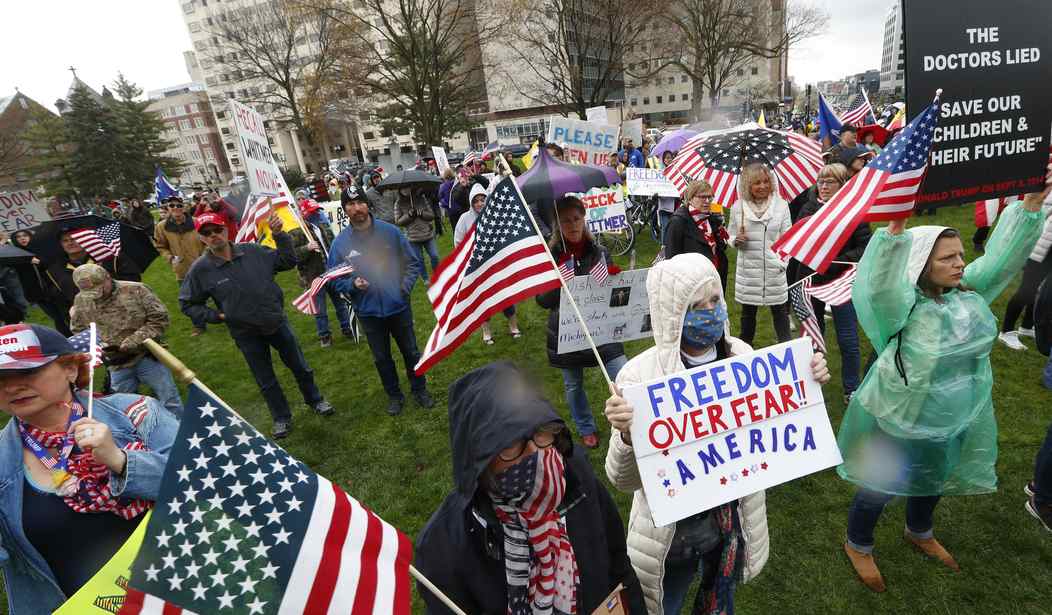While COVID-19 continues to spread, Americans can’t afford to wait months or even years until a vaccine is developed to try to get back to a greater semblance of normal.
The federal government and the American taxpayers do not have the ability or the capacity to support shuttered businesses and laid off employees forever. And the longer people are out of work, away from family and friends, and sheltered at home, the more public health suffers, both physically and mentally.
At some point soon, more businesses need to reopen, employees need to be able to go back to work, children need to go back to school, and people need to feel comfortable returning to more public activities.
A roadmap to recovery already exists, and many governments, businesses, and community organizations across the country have been following it to safely reopen workplaces, schools, and public spaces while still mitigating the spread of the disease. However, more needs to be done.
The roadmap was created by the National Coronavirus Recovery Commission, a group of 17 experts brought together from around the nation in the fields of medicine, economics, government, business, disaster response, education, and religion. The commission developed 265 specific, actionable recommendations for federal, state, and local governments as well as businesses, churches, charities, and community organizations to help navigate the nation through the pandemic and toward recovery.
Recommended
All of the recommendations can be found at www.CoronavirusCommission.com, but following are some of the bigger picture ones that should be under consideration today.
While social distancing and mask wearing are key to slowing the spread of the coronavirus, research shows that shutting down entire states shouldn’t be part of the mitigation toolkit. The spread of COVID-19 in the U.S. has been heavily concentrated in a small number of states — and in fact, among a small number of counties within those states. Overall, only about 20% of U.S. counties account for 90% of all COVID-19 deaths.
Shutting down entire states only worsens the economic devastation as well as the health and welfare of otherwise healthy individuals. Governors and local officials need to make reopening and shutdown decisions on a county-by-county basis, and they need to base those decisions on case numbers and infection rates. Counties with low case numbers should be considered for reopening.
Additionally, we know that most people who get COVID show mild to no symptoms. Recent Centers for Disease Control data reaffirms that severe cases of COVID overwhelmingly happen in older people and those with existing chronic conditions. More than half of the elderly who have died from the virus were in nursing homes. Our COVID-19 strategy needs to be targeted to protecting these more vulnerable individuals, not locking down whole populations.
A recent Heritage Foundation report analyzed several countries’ responses to combating the pandemic and consistently found that two things need to be in place to successfully turn back the virus. The first is adequate testing capacity so that even people who don’t show symptoms can be tested for the virus. If there’s no way of knowing who has the virus and who can spread it to others, it’s exponentially harder to prevent its spread.
The second thing needed is a safe and separate place for the sick to recover. Spread is reduced significantly when infected individuals have a place to quarantine apart from non-infected people, including members of their own household.
The commission has also recommended reducing the risks associated with future pandemics by investing in adequate national and state stockpiles of personal protective equipment and other medical supplies; becoming less dependent on adversaries like China for our pharmaceuticals and medical supplies; and developing plans to quickly ramp up production of food, medicine, and other critical supplies to meet the increased demand when future crises hit.
The federal government and many governors have adopted several of the commission’s recommendations over the past months, but much more needs to be done as we wait for an effective vaccine. Our physical, mental, and economic health depend on it.
Whether we’ve faced pandemics, world wars, or economic depression, America has always emerged from her challenges stronger. I am confident that with governments, private industry, and civil society working together, and with the unparalleled can-do spirit of the American people, this nation will yet again emerge from this challenge even stronger.
Kay C. James is president of The Heritage Foundation (heritage.org) and chairman of the National Coronavirus Recovery Commission (coronaviruscommission.com).

























Join the conversation as a VIP Member